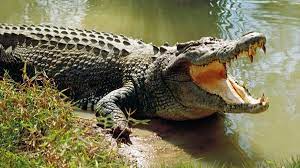Bhitarkanika National Park:

The Bhitarkanika National Park have reached a saturation point in the population of crocodile which could lead to more human-Crocodile conflict.
- Almost 50 people have been killed by crocodiles since 2012 in and around the park, while 25 crocodiles died during the same time after entering human settlements or getting caught in fishing nets.
- Crocodile is a territorial aquatic reptile, that means too many crocodiles can’t live in a small area as there will be increased competition for food, mating partners, basking sites.
- The Union Ministry of Forest and Environment in 1991 had directed the state forest department to stop the crocodile rearing programme in Bhitarkanika due to the saturation point reached by crocodile population.
- However, the government stopped funding for the crocodile breeding and rearing project in 1990.
- Further, the forest department had stopped the crocodile breeding and release programme in 1995 in the park as the crocodile population had reached around 1,000, from 94 in 1975.
Bhitarkanika National Park:
- Bhitarkanika National Park is spread in a vast area of 672 Kms in Orissa.
- It is the second largest Mangrove ecosystems of India.
- The National Park is essentially a network of creeks and canals which are inundated with waters from rivers Brahmani, Baitarani, Dhamra and Patasala forming a unique ecosystem.
- Its proximity to Bay of Bengal makes the soil of the area enriched with salts, the vegetation and the species of the sanctuary is comprised of those which are mainly found in the tropical and subtropical inter tidal regions.
- It is the breeding place for the endangered Salt Water Crocodiles.
- The Gahirmatha Beach which forms the boundary of the sanctuary in the east is the largest colony of the Olive Ridley Sea Turtles.
- The other unique phenomenon is the Bagagahana or the heronry near Surajpore creek.
- Thousands of birds colonise the creek for nesting and the aerial acrobatics performed prior to mating make for an impressive sight.
- Bhitarkanika is also home to eight varieties of Kingfisher birds which is also a rarity.




